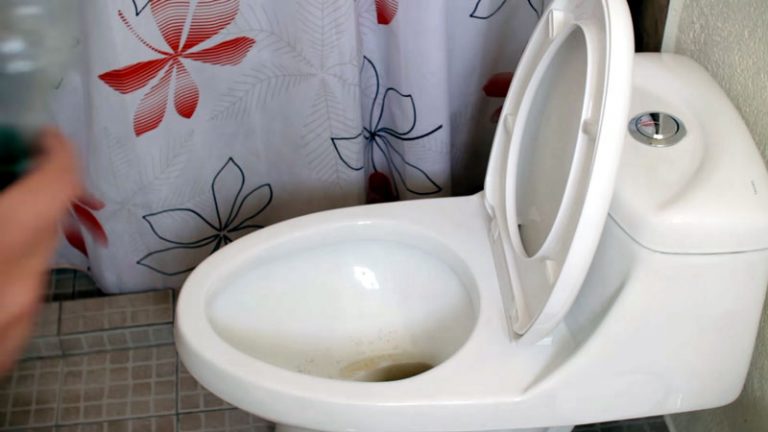Replace Rubber Seal Around Shower Glass: Stop Leaks Fast!
That small puddle of water on your bathroom floor is more than just an annoyance. It’s a warning sign. The humble rubber seal around your shower glass, often ignored, is failing its one critical job: keeping water inside the shower.
When this seal cracks, hardens, or fills with mildew, it allows water to escape, leading to potential water damage, mold growth, and a slippery, unsafe floor. Ignoring it can turn a tiny leak into a costly bathroom repair.
You'll Learn About
Why Your Shower Seal Is Failing and Why You Can’t Ignore It
Shower seals live a tough life. Constant exposure to water, temperature changes, and cleaning products causes the flexible vinyl or rubber to degrade over time. Eventually, it will become brittle, discolored, and lose its ability to create a watertight barrier.
The consequences are serious. Water leakage can damage your flooring, subfloor, and even the wall structure over time. The persistent moisture creates a perfect breeding ground for unhealthy mold and mildew, which can be both unsightly and a health concern.
Top Signs Your Shower Seal Needs Immediate Replacement
Not sure if your seal is the culprit? Look for these clear indicators. If you see one or more, it’s time to act.
Visible Cracks or Brittleness: Inspect the seal closely. If you see cracks, splits, or if it feels hard and inflexible to the touch, it has lost its sealing ability. A healthy seal should be pliable.
Discoloration and Mold: Black or green spots are a sure sign of mold and mildew buildup. Often, this growth occurs deep within the seal’s crevices, making it impossible to clean effectively. A discolored, yellowed appearance also indicates the material is old and breaking down.
Water on the Floor: This is the most obvious sign. A puddle, no matter how small, consistently appearing after a shower means water is escaping. The seal is the most likely cause.
The Door Doesn’t Close Properly: A worn or misaligned seal can sometimes interfere with the smooth operation of the shower door. If the door sticks or doesn’t create a firm closure, the seal might be to blame.
First, Identify Your Seal Type
Before you can buy a replacement, you need to know what you’re working with. Shower glass seals come in several common types, each designed for a specific part of the door. Measure the thickness of your glass (most are 6mm, 8mm, or 10mm) to ensure you buy the correct size.
There are four main types you’ll encounter:
- Bottom Seals (or Sweeps): These attach to the bottom edge of the door. They often have a drip rail or fin that directs water back into the shower tray.
- Side Seals (or Jambs): These are fitted to the vertical edges of the glass door or panel. They create a barrier against the wall or another glass panel.
- Magnetic Seals: Often used in pairs on the closing edges of a door and frame, these seals have magnetic strips embedded within them to pull the door shut and create a strong, watertight closure.
- Bulb Seals: These have a hollow, bulb-shaped section that compresses when the door closes to fill gaps, providing an excellent watertight barrier.
Comparison of Common Shower Seal Types
Understanding the differences can help you confirm you’re buying the right part. Here’s a quick breakdown of the most common materials and their uses.
| Seal Type | Common Material | Primary Use | Key Feature |
|---|---|---|---|
| Bottom Sweep/Drip Seal | Clear PVC/Vinyl | Bottom edge of the shower door | Features a fin or drip edge to redirect water. |
| Side Jamb Seal | Clear PVC/Vinyl | Vertical side of the door (hinge or handle side) | Creates a seal against a wall or another glass panel. |
| Magnetic Seal | Co-extruded PVC with Magnet | Door’s closing edge and frame | Ensures a tight, secure closure. |
| Bulb Seal | Silicone/Translucent Vinyl | Can be used on sides or bottom for larger gaps | Compressible bulb shape fills gaps effectively. |
Your Step-by-Step Guide to a Leak-Free Shower
Replacing a shower seal is a straightforward DIY project that most homeowners can complete in under an hour. With the right tools and a little patience, you can restore your shower’s integrity and prevent costly damage. This is a far simpler task than a major renovation where the Kohler shower installation cost could be a significant investment.
Gather Your Tools and Materials
Having everything ready before you start makes the job go smoothly. You won’t need much.
- New Shower Seal: The correct type and size for your door.
- Measuring Tape: For accurate measurements.
- Utility Knife or Heavy-Duty Scissors: For a clean cut on the new seal.
- Cleaning Solution: A mixture of white vinegar and water works great.
- Microfiber Cloths or Rags: For cleaning and drying.
- Putty Knife or Plastic Scraper (Optional): To help remove stubborn old seals.
Step 1: Carefully Remove the Old Seal
Start by simply pulling the old seal away from the glass. Most seals are friction-fit and aren’t held by adhesive. Start at one end and pull it straight off the edge of the glass door.
If the seal is brittle, it may break into pieces. If it’s particularly stubborn, you can use a hairdryer to gently warm the vinyl, making it more pliable and easier to remove.
Step 2: Deep Clean the Glass Edge
This is the most critical step for ensuring the new seal fits perfectly. Once the old seal is off, you will likely see a buildup of soap scum, mineral deposits, and mildew on the glass edge. The glass must be perfectly clean for the new seal to grip properly.
Spray the glass edge with your vinegar and water solution and let it sit for a few minutes to break down the grime. Use a non-abrasive scrub sponge or a microfiber cloth to wipe the area thoroughly. For stubborn buildup, a plastic scraper can help, but never use metal tools that could scratch the glass.

Step 3: Measure and Cut the New Seal
Measure the length of the edge where the new seal will be installed. Transfer that measurement to your new seal strip. For the most accurate result, you can also hold the new seal up against the door and mark your cutting point directly.
Using a sharp utility knife or heavy-duty scissors, cut the seal to the required length. Make the cut as straight and clean as possible to ensure a snug fit at the corners and prevent gaps.
Step 4: Install the New Rubber Seal
Installing the new seal is usually a simple press-on process. Start at one end of the glass door. Align the channel of the new seal with the edge of the glass and press it firmly into place.
Work your way along the length of the door, pushing the seal onto the glass until it is fully seated. The fit should be snug. If it’s very tight, you can use a rubber mallet to gently tap it into place, but be careful not to hit the glass directly.
Step 5: Test Your Work
Once the new seal is installed, close the shower door to ensure it operates smoothly and closes completely. Run your showerhead and direct water at the new seal to check for any leaks. If you’ve done everything correctly, your bathroom floor should remain perfectly dry.
Troubleshooting Common Issues
Sometimes, even a simple project can have a hiccup. If you run into trouble, here are some quick fixes.
The New Seal Feels Too Loose or Too Tight: This almost always means you’ve purchased a seal designed for a different glass thickness. Double-check your glass measurement and the specifications of the seal you bought.
Leaks Persist After Installation: Check that the seal is fully seated along the entire length of the glass. Also, ensure you cut the seal to the correct length; a seal that is too short will leave a gap at the end for water to escape.
The Door Is Now Hard to Close: The new seal might be slightly bulkier than the old, worn-out one. Often, it just needs a short “break-in” period. If the issue persists, you may need to slightly adjust the door hinges to accommodate the new, thicker seal.
Maintaining Your New Seal for a Longer Life
You can significantly extend the life of your new shower seal with a little routine care. Proper maintenance prevents the buildup that causes seals to fail prematurely.
Clean it Weekly: When cleaning your shower, pay special attention to the seal. Use a soft brush and a mild, non-abrasive cleaner to gently scrub away any soap scum. Making sure you know how to warm up shower water to a comfortable temperature can make your weekly cleaning routine much more pleasant.
Squeegee After Every Shower: Using a squeegee on the glass and the seal after each use is the single best thing you can do. It removes the majority of water droplets before they can evaporate and leave mineral deposits behind.
Ensure Good Ventilation: A damp bathroom is a breeding ground for mold. Use your exhaust fan during and after every shower to help dry out the enclosure and the seal, preventing mildew growth. If you often find your shower too hot or too cold, fixing the temperature valve can also help regulate humidity levels.
By replacing a worn-out rubber seal, you not only stop annoying leaks but also protect your home from water damage and maintain a cleaner, healthier bathroom environment. It’s a small project that delivers significant peace of mind.

